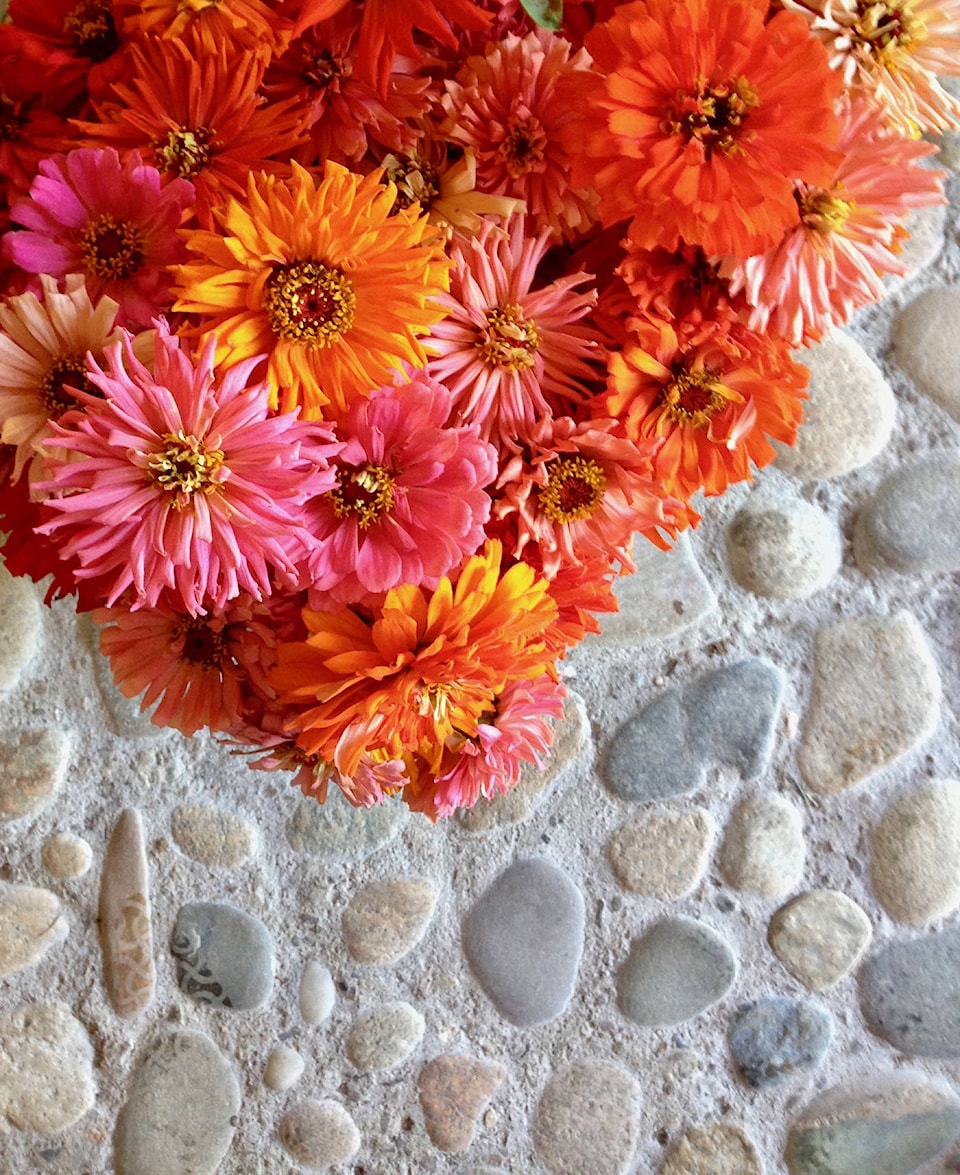Can a plant, like a person, be too easy? Too straight-forward and too darn cheerful? And if they are, do we find them lacking depth and complexity and dismiss them as well… ‘common’?
I have done I admit—with zinnias.
The mainstay of farm bouquets, I figured they had about as much subtlety as fruit soda pop, exploding into saturated orangey blooms in summer. Sticky and sweet, I couldn’t bear them until I decided I loved them, which says a lot more about me than zinnias, but lest you too felt zinnias weren’t worth your time…I’m now going to convince you otherwise.
First plus: you can start zinnias in under five days from seed. The seeds are inexpensive, large, and easy enough for kids to sow. Keep them at 80 degrees (27C) for best germination results.
Zinnias are native to the southwest and Mexico, so they perform well in heat. As our summers get hotter and drier, zinnias will thrive.
Plant a lot of seeds if you want to put on a good show or use zinnias for cut flowers. Zinnias can handle tight spacing. For example, in a ten-foot by four-foot bed, you can fit sixty-five plants on offset 9 inch spacing. Cut your zinnias ‘hard’ (meaning deeply) and they will branch and weave together offering one another support. Remember to pinch the growing tip of zinnias when they reach about ten inches to encourage branching early; this will make a bushier plant and deliver more blooming stems.
Varieties to consider range from the classic to the sublime. Bright mixes include ‘State Fair’ and the Benary’s Giant Series which includes the everything from salmon, to wine, to carmine rose, scarlet, coral, purple, bright pink and lime. These grow over three feet tall and produce double blooms that look like plush cushions about four to six inches wide. Even larger blooms can be found in the ‘Cactus Flowering’ series, which have a shaggy look resembling small dahlias (though pleasantly messier).
The ‘Zinderellas’ are smaller, growing to about two feet. They have small heads and look a bit like a pincushion flower with a distinct eye. These come in a range of pastel pinks and peaches.
My favourite deeply coloured zinnias are the tiny ‘Jazzy Mix’ and ‘Persian Carpet’ blends which combine burgundy, pink, red and yellow with plenty of variation. These are useful for posies or bed edging.
Another small-flowered zinnia to try is ‘Red Spider’, an heirloom variety which is a perfect clear red, each blossom no more than an inch wide. While ‘Red Spider’ does grow to 2-feet, it takes hard cutting well and blooms until frost.
Finally, the Queen: ‘Queen Red Lime’ which has soft burgundy petals that lighten to pink and green towards the centre of the flower. Another variety, ’Queen Lime with Blush’, is out this year featuring double and semidouble flowers up to four inches wide. Incredibly versatile, with loads of variation, these are favourites now in my garden. The Queens grow to almost three feet in height, so give them some support, plant tightly, or keep them picked. If you have a windy site be careful: the large zinnias can get so top heavy, they can break or topple from their own weight.
Zinnias have an excellent vase life, lasting over a week. That said, they are considered ‘dirty flowers’, meaning bacteria love their hollow stems so change their water daily.
Christin Geall is an avid Oak Bay gardener and creative non-fiction writing instructor at the University of Victoria.
